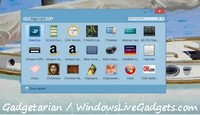Learn (and do not neglect) to make and use system images of your PC
Nothing easier than making images of your system, provided you choose a convenient program. As for myself, I’ve found mainly two easy and powerful backup, imaging and cloning tools, Macrium Reflect and Aomei Backupper. You can try both of them to decide what to keep, but if you had to choose only one, it would be the Backupper in my opinion, since it features a less confusing interface, and most of all because it lets you mount and browse its images as if they were normal drives. Browsing an image is a feature you don’t want to miss. Note also that the Windows native imaging function is so basic, you can just forget about it!
To make an image of your system disc, you just select the relevant partitions and a destination in a second drive, internal or external, that has enough space to host your image. If you need to restore or browse the image, just make sure this drive is available.
Obviously you need a system image whenever you change your hard drive or after some installation left your system damaged. In these cases you can return to a precise state, when everything worked fine, in just a few minutes. This is why it is important to create system regularly, especially before you install a heavy or in any way complex or “dangerous” application.
You can also use a system image beyond this obvious need, when you have reinstalled Windows, to locate and copy or just inspect configuration or other files in the previous installation or user folders. Of course you can copy such files with a regular backup too, but it is better to have the entire system available — and, if you are prepared to copy the whole system, why not doing it in the form of an image, ready to be restored and activated, bringing you back to a healthy state, if needed?
Read more on Macrium Reflect, Aomei Backupper, and similar backup, imaging and cloning free applications, and enjoy!
